This country has amazing views but don’t miss Icelandic food because you can’t get some of it anywhere else in the world.
The beautiful island of Iceland is surrounded by the cold and clean Atlantic ocean.
It is home to the world’s healthiest seafood, so it’s no wonder Icelandic cuisine specializes in delicious seafood, where fermented shark is considered delicatessen too.
But they also have a lot of traditional Icelandic food made of lamb and dairy.
Due to the island’s isolated location in the cold Arctic circle, where resources are scarce and the sun is not its strongest, for many centuries, the Icelanders (Íslendingar) had a simple but nonetheless mostly very healthy diet.
They survived on raising livestock that the first settlers (Norse people) brought along with them to the island.
This included sheep, goats, and cattle, and then some fishing was done as an extra.
The whole land is mostly barren. So they were only able to grow mostly root vegetables, such as potatoes, carrots, cabbage, and kale, but very little grain.
Most grains were imported, which was expensive. This made bread a luxury for the Icelandic population.
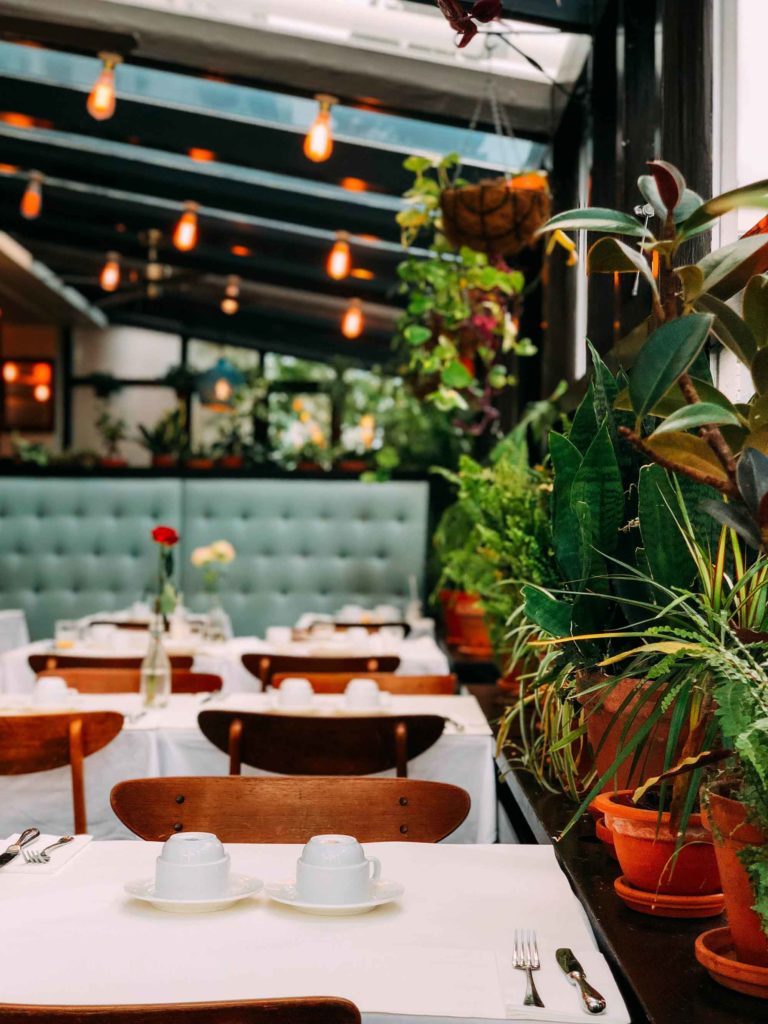
After the world became globally-connected and importing food became less complicated, many more foreign ingredients started to appear in Icelandic food.
Today’s modern Icelandic cuisine is a combination of the traditional and the contemporary twist on them.
Here are the 23 most popular traditional and contemporary Icelandic foods.
These best represent this unique cuisine and culture. We also recommend restaurants where you’ll find these delicious dishes.
Icelandic Food
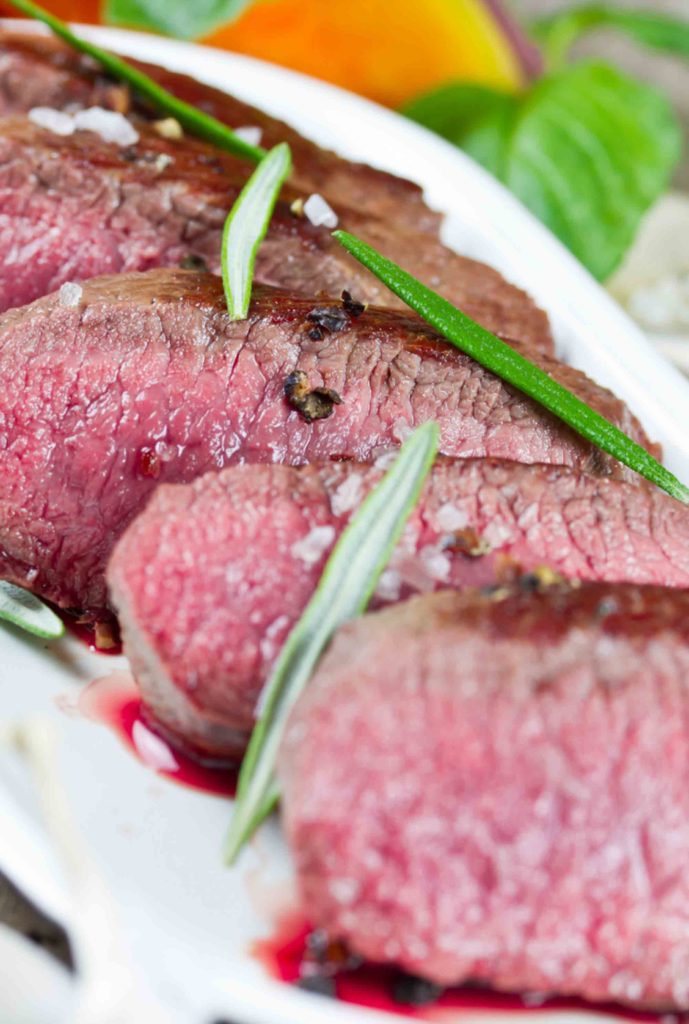
Icelandic Lamb Fillet
The lamb on Iceland ranges free and feeds on wild grasses and Icelandic moss.
This allows the animal to grow naturally, and have healthy and good tasting meat. Many travelers say that the best sheep meat they have ever had is in Iceland.
The lamb fillet, or tenderloin, is very tender meat. It’s made from a part that the animal barely uses (from under the short loin), so the meat has no fat and no connective tissue.
Lamb fillet is very rich in protein, vitamin B12, iron, and zinc. Sauce made from lamb bones is an ideal supplement for this dish.
Codhead (Matur og drykkur)
This dish is for the brave ones.
The Icelandic cod is probably the most common fish in the Atlantic ocean.
It has a wide range of healthy foods to eat in the clean Nordic waters, which gives them a unique sweet flavor.
The cod head is big, so there’s actually plenty of meat to eat, it’s not all bones.
The Michelin rated restaurant Matur og drykkur is an expert at making this unique plate, and other traditional Icelandic food.
Where to find: Matur og drykkur
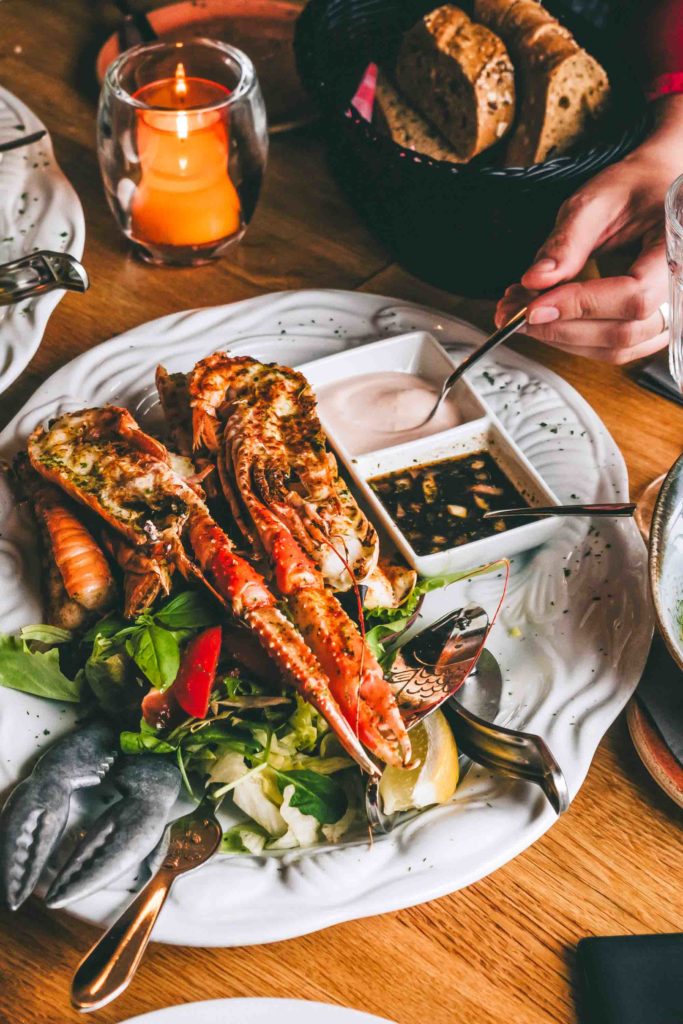
Lobster or Langoustine Soup
The Langoustine (small lobster) soup of Sægreifinn has been called by many the best lobster soup in the world (even the restaurant’s own sign proudly states that).
Icelandic lobster is caught in the South Coast waters. It is popular for having tasty, tender meat.
The creamy and salty langoustine soup is an ideal food for the cold but cozy winter holidays.
It’s served with either toasts or baguette slices.
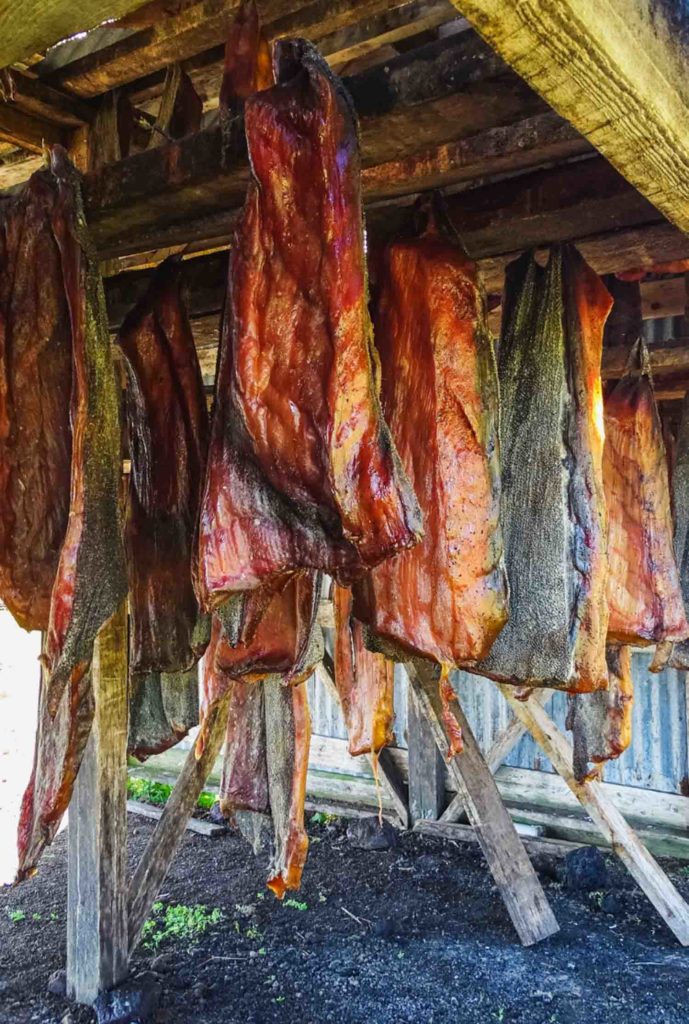
Hákarl (Fermented Shark)
This is something truly quirky and special, found only in Iceland and Greenland.
It has a very fishy taste with a little bit of ammonia, and it’s best served with a shot of the Icelandic spirit called Brennívín.
It means Black Death – sounds like something you definitely have to try, right?.
Fermented shark is so common in Iceland that you can also find it in the frozen section of grocery stores.
We have to be honest and let you know that this Icelandic food might not be everyone’s cup of tea, and maybe only the really adventurous ones will try it.
Sambó Þristur Chocolate
Iceland is one of three countries that combines Chocolate and Licorice together (the other two being Denmark and New Zealand).
It’s no exaggeration to say it’s a match made in heaven. This is why it’s one of the most popular candies in Iceland.
It’s original, it’s Icelandic, and it’s a quality product.
You can buy this chocolate in any grocery store or gasoline station in Iceland.
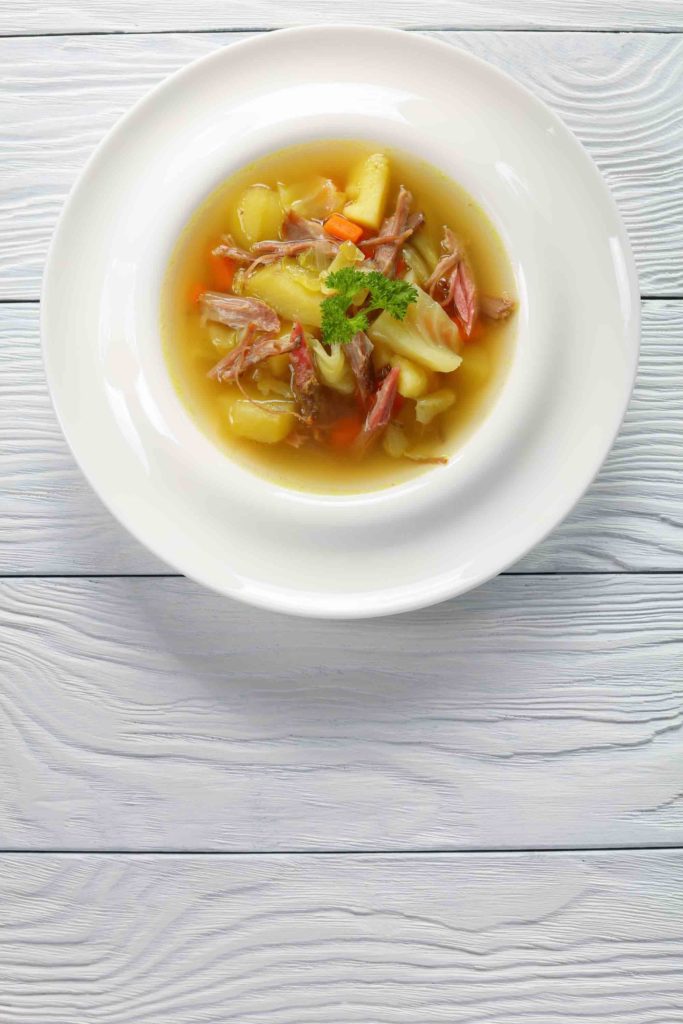
Kjötsúpa (Icelandic Meat Soup)
Some would agree that Kjötsúpa, also called Icelandic meat soup, is the number one national dish of Iceland.
It’s been part of the culture since the settlement of Iceland, around the year 870.
This Icelandic food is made from lamb (or sheep) and a collection of root vegetables.
Yet it is called meat soup, and not lamb soup. This is because for hundreds of years sheep was the most common meat on the island.
Therefore the word meat was synonymous with sheep or lamb.
This soup is said to cure hangovers and to give you an energy boost on cold winter days.
Where to find it: Icelandic Street Food
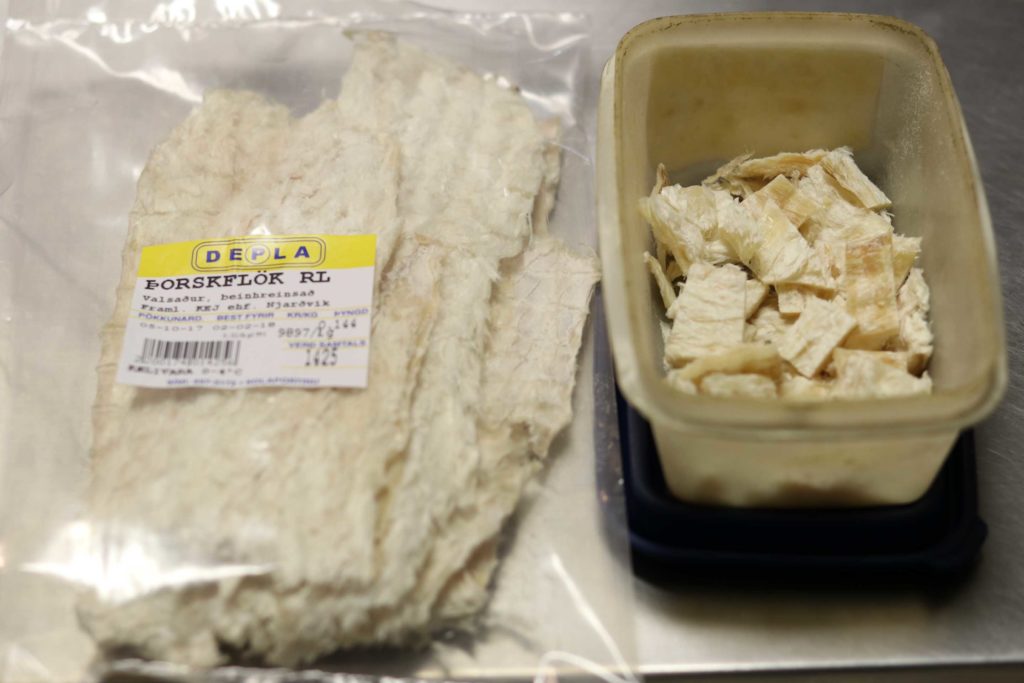
Harðfiskur (Stockfish)
As we already mentioned above, it was not possible to harvest grain on the barren lands of Iceland.
Grain was hard to come by before the 19th century and had to be imported from Denmark. For most Icelanders, this was too expensive.
Instead of bread, the Icelanders ate dried stockfish (dried fish).
Think of it as beef jerky. It can be consumed with main dishes or simply as a snack.
Even though today they can obviously afford bread and don’t eat that much stockfish, it still remains a popular dish.
You can find it in every grocery store.
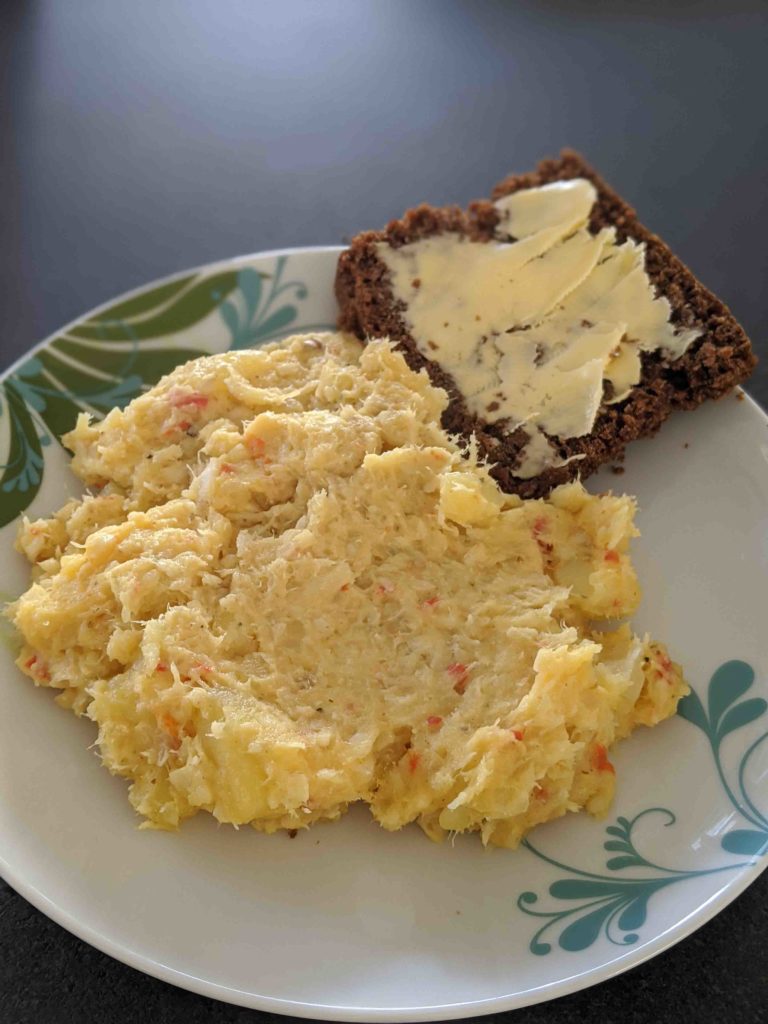
Plokkfiskur (Fish Stew)
Like almost every nation on this planet, Iceland has its own national stew.
This is a simple mix of cooked and mashed cod, flour, milk, and potatoes & onions, seasoned with salt and pepper.
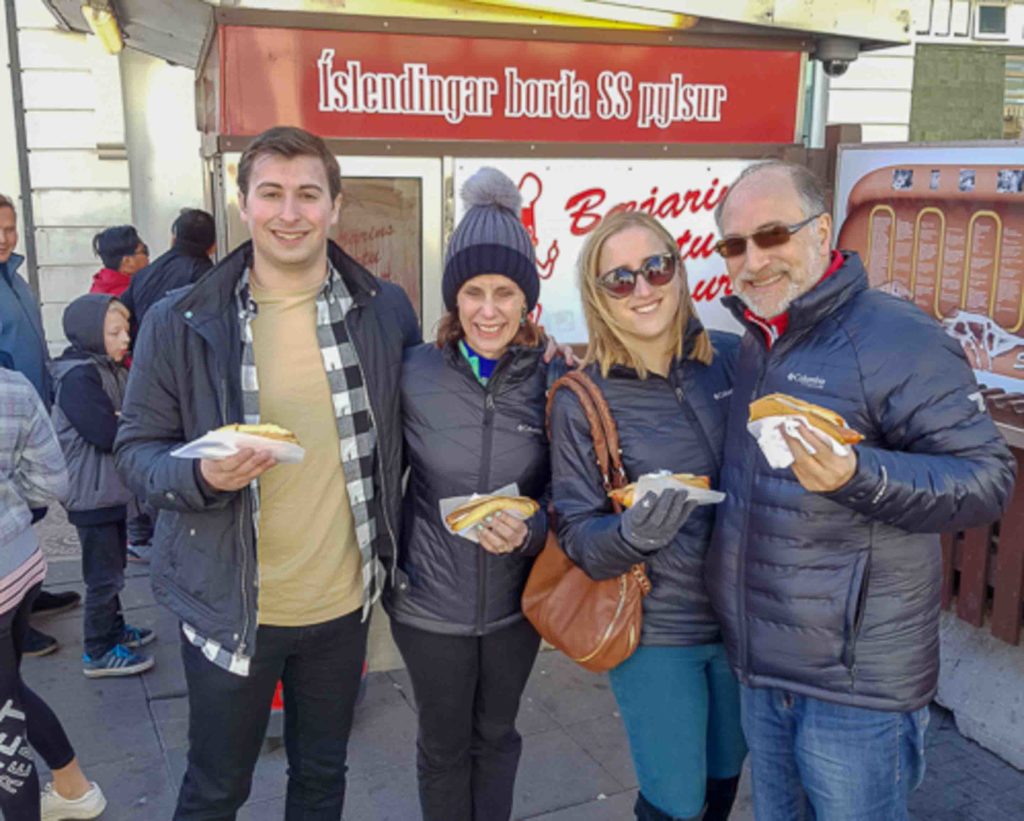
Pylsur (Icelandic Lamb Hot Dog)
The famous Icelandic lamb hot dog is served in every fast food shop in the country.
But to get the real authentic experience, we recommend you to try it at the Bæjarins Beztu Pylsur hot dog stand.
This translates to “best hot dogs in town”, in Reykjavik, this stand has been operating since 1937.
The hot dog itself is mostly made of fresh, grass-fed Icelandic lamb, served on a warm bun.
It is topped with raw white onions, crispy fried onions, ketchup, remoulade (mayo, capers, mustard, herbs), and pylsusinnep (a type of brown mustard) on top.
Where to find: Bæjarins Beztu Pylsur
Arctic Char
Arctic char is the most common freshwater fish in Iceland, which is home to endless fresh streams, rivers, and lakes.
It is closely related to salmon fish, both being part of the Salmonidae family. It has a rich buttery taste, somewhere between salmon and trout.
Where to find: Matarkjallarinn / Food Cellar
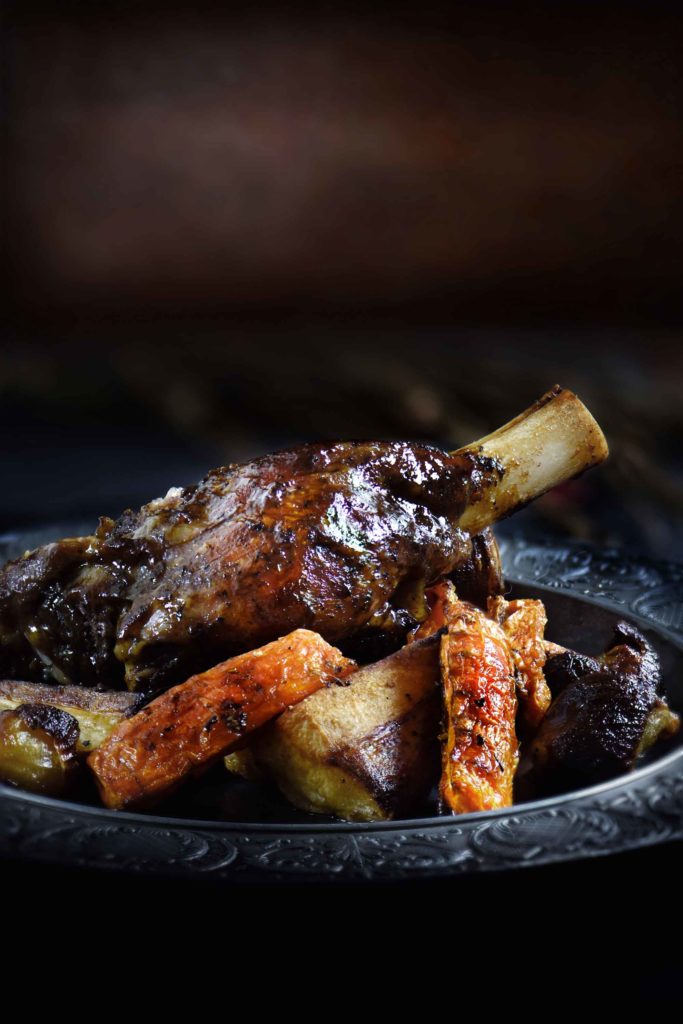
Lamb Shank
This is a lamb shoulder, cooked very slowly (for 12 hours).
You can imagine how tender the meat is after that, it almost melts in your mouth.
Sæta svínið restaurant offers this dish with chorizo & bacon ragu, butter beans, and green peas.
Kleina (Icelandic Donuts)
Kleina is part of the everyday cuisine in Iceland, it’s safe to say it’s their favorite pastry.
It’s light, fluffy, and moist, seasoned with cardamom, vanilla, or nutmeg.
It originates from Scandinavia, where this is a holiday or Christmas treat, whereas in Iceland it became an everyday pleasure.
Where to find: Sandholt bakery and every coffee shop or bakery in the country.
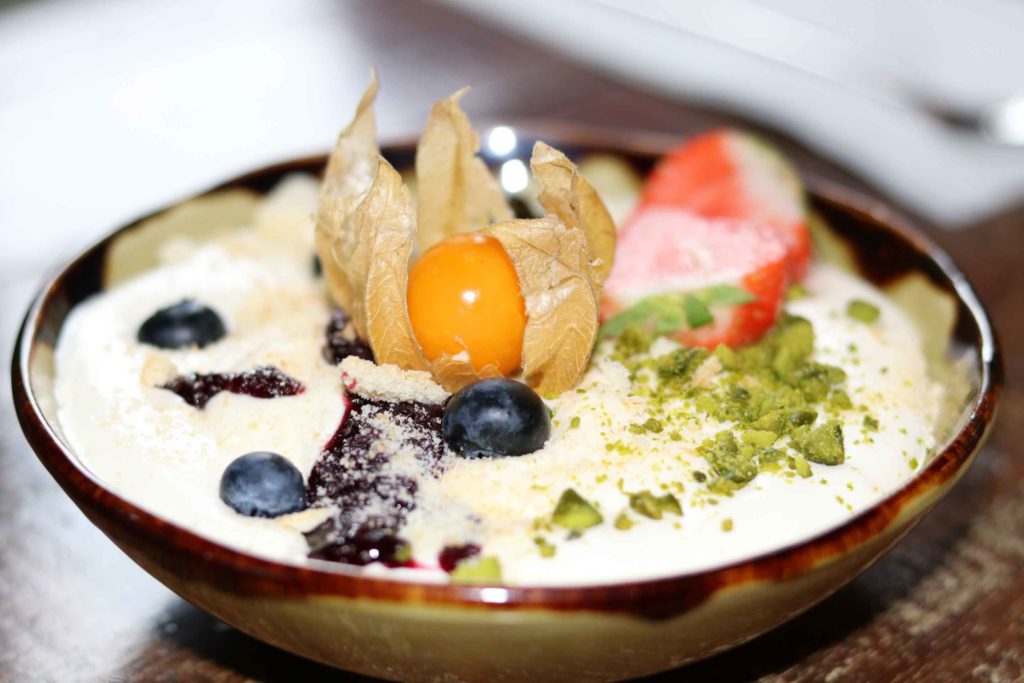
Skyr
Skyr is a traditional dairy product, originating from Norway, and brought over to Iceland with the first settlers.
Its texture resembles yogurt, and it’s often compared to Greek yogurt, but they have differences.
Skyr is more thick, creamy, it’s higher in protein and less in sugar than Greek yogurt. It tastes similar to sour milk cheese, but it is consumed as yogurt.
You can find it in the grocery store.
Chocolat Bun or Snúður
They say if this beloved Icelandic chocolate bun (or cinnamon roll) is not as big as your head, it’s no good.
There’s some debate going on whether this sweet is originally Icelandic or Scandinavian, but that doesn’t matter as all their chocolate buns are delicious.
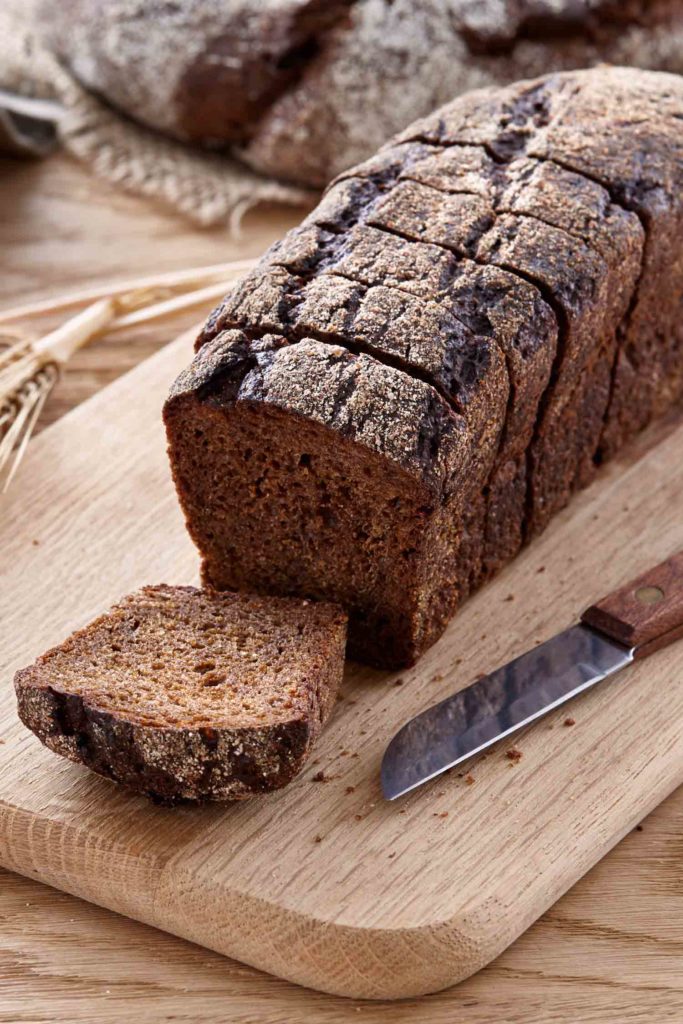
Rúgbrauð (Rye Bread)
This dark sweet-tasting rye bread is very common in Iceland. It is traditionally baked in a pot, but the modern way is to make it in a square-shaped baking pan.
This Iceland food can be served with butter, smoked lamb (hangikjöt), and fish dishes. It’s especially delicious with the fish stew (plokkfiskur).
You can find it in every grocery store.
Icelandic Chocolate
As you can see, if you have a sweet tooth, you landed in the right place.
Icelanders definitely love their sweets. Omnom is a small batch, artisan chocolate shop, making mostly dark chocolate, located in the heart of Reykjavik.
They import the best quality cocoa from local farms in Madagascar, Tanzania, and Nicaragua, and mix it with milk, Icelandic sea salt, and coffee beans.
It’s a truly unique chocolate brand, found in their one & only shop in Reykjavik.
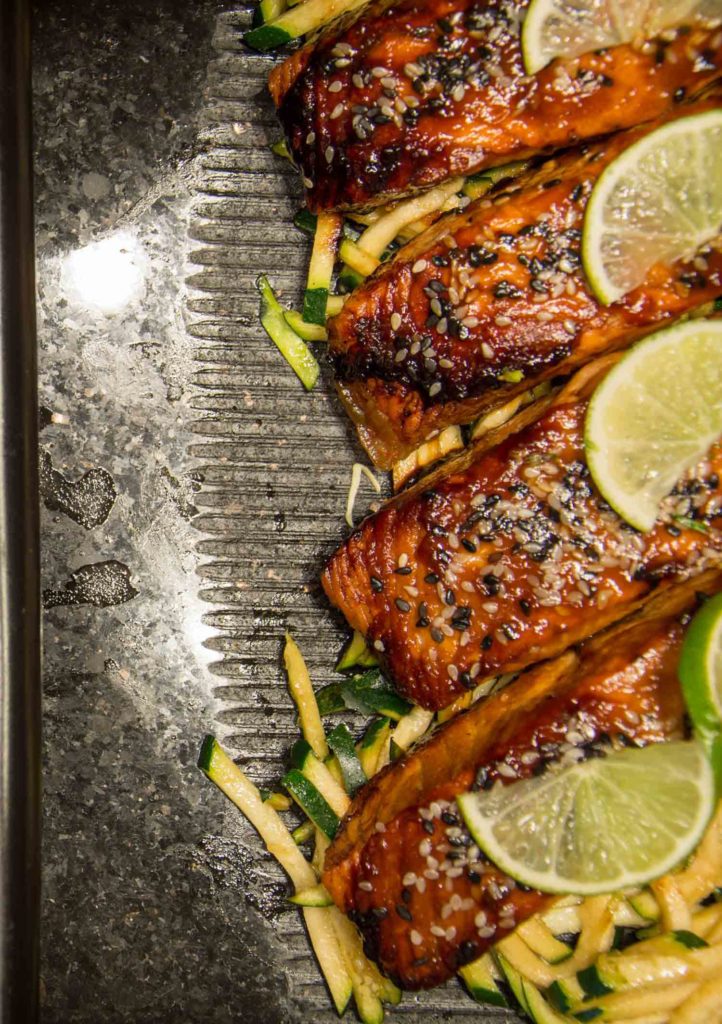
Icelandic Salmon
Salmon really doesn’t need to be introduced.
It’s one of the most popular, most delicious, and healthiest fish that exists on the planet, consmed in every country of the world.
However, we think it’s worth mentioning it on this list. Salmon caught in Iceland is arguably the healthiest kind of salmon there is as the rivers and waters are very clean.
Hangikjöt (Smoked Lamb)
Icelandic smoked lamb is not an everyday food, but something for special occasions, and Christmas.
It’s an old favorite of the Icelanders, and some would say it’s one of the tastiest smoked foods that exists.
This Iceland food can be eaten hot or cold, and it can be a topping on butter bread.
But the dish itself is traditionally served with cooked potatoes, white béchamel sauce, peas, and pickled red cabbage.
You’re most likely to find it in restaurants around the Christmas season, but you can also buy it in grocery stores and cook it yourself.
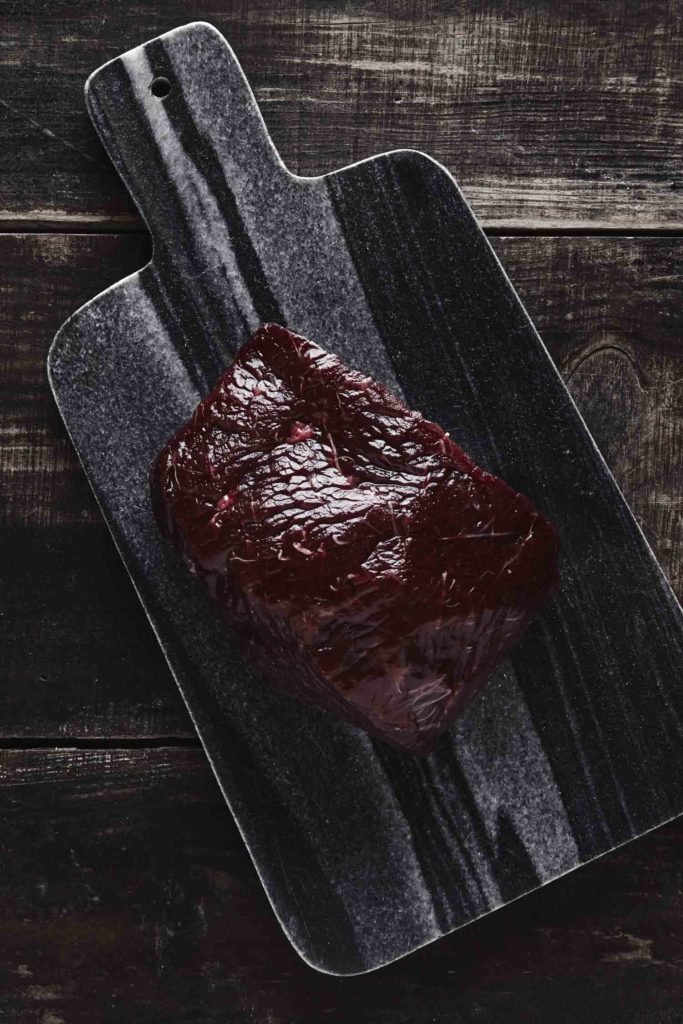
Whale Steak
Whaling in Iceland is strictly regulated by the Icelandic Directorate of Fisheries.
Only certain types of whales are allowed to be hunted, minke and fin. That’s because there is an abundance of them in Icelandic waters.
Some restaurants in Iceland serve the minke whale steak, while the fin whale meat is usually shipped off to Japan.
Because it’s a bit controversial, not many Icelanders consume it regularly.
It’s mostly the tourists who have the appetite and the curiosity to try some, that’s why many restaurants serve it.
We’ll leave the decision to you.
Where to find it: Þrír frakkar
Hjónabandssæla (Happy Marriage Cake)
This funny-named tart is made of rhubarb jam, oats, and brown sugar.
It got this name because they say just like marriage, this cake also gets better over time.
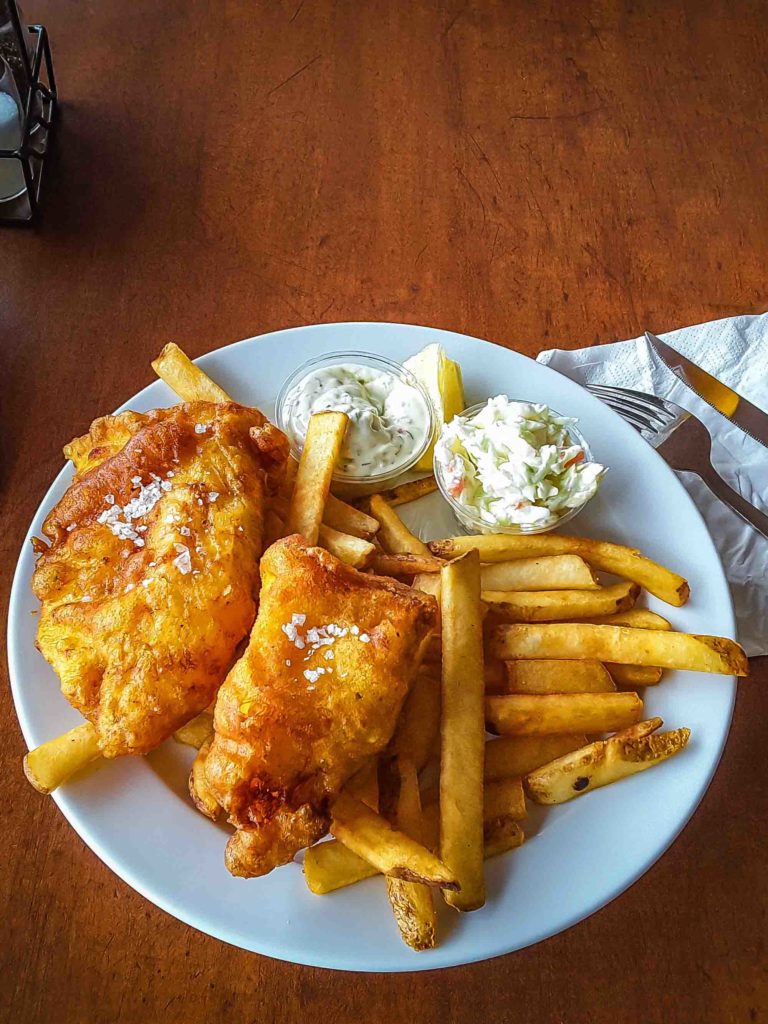
Icelandic Fish & Chips
Yes, this notoriously British food also found its way to Iceland, except they try to make it a bit healthier version.
First of all, they have the freshest and healthiest fish in the world on their hands.
Second of all, they try to make the batter from different ingredients.
While the classic British version is flour, vinegar, salt, beer, and baking soda, some Icelanders make theirs from spelt flour and without beer, cooking in canola oil.
This results in the Icelandic version of the fish being more light and tender.
Chips are not deep-fried like the British ones but roasted in the oven, making it crispy on the outside but creamy on the inside.
Where to find: 101 Reykjavik Street Food
Laufabraud (Leaf Bread)
A traditional Icelandic bread that is served during Christmas feasts. Sometimes it’s also called snowflake bread.
It is a popular thing in some families to come together and bake leaf bread before Christmas.
Flóki Whiskey
We must finish this list with a locally made alcoholic beverage.
We already mentioned Brennívín, aka the Black Death), so get ready for another strong one.
Flóki Icelandic Whiskey, proudly carrying the name of the first settler, Hrafna-Flóki.
It is strictly made only from ingredients found in Iceland: fresh water, herbs, barley.
Its taste palate is vanilla, white coffee, fresh bread, pepper, and bubblegum, with a spicy finishing taste.
Valur is the founder and chief memory maker at the tour company, Your Friend in Reykjavik. He’s a certified guide, musician, and history nerd with a passion for food & drink. He’s your guide to everything Iceland has to offer. Find him also on Facebook, Instagram and Twitter.
Pin it: Iceland Food
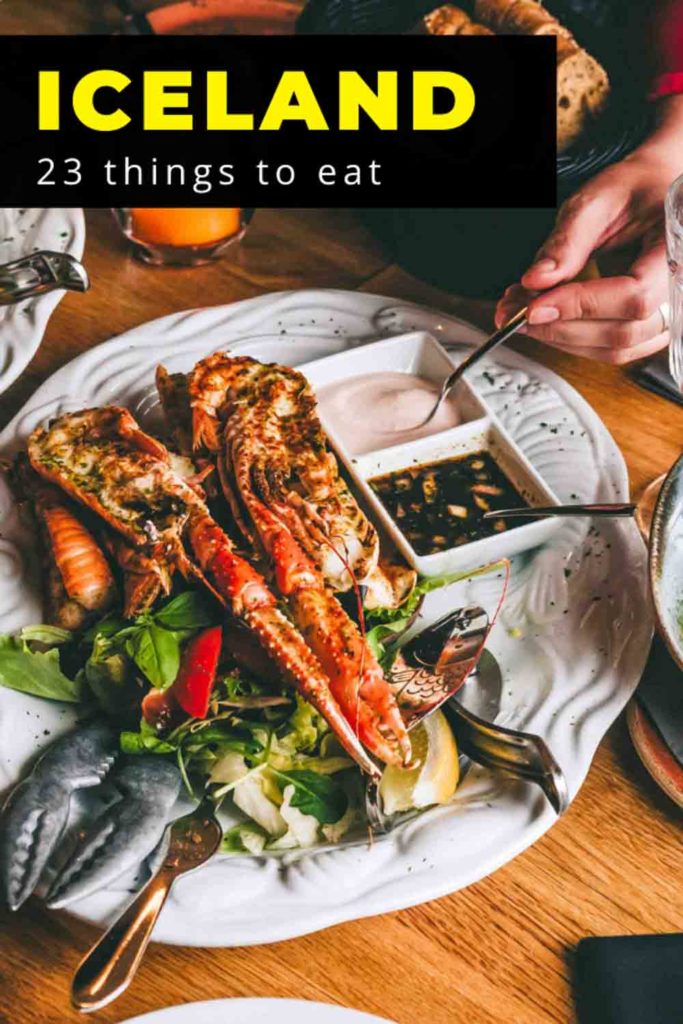
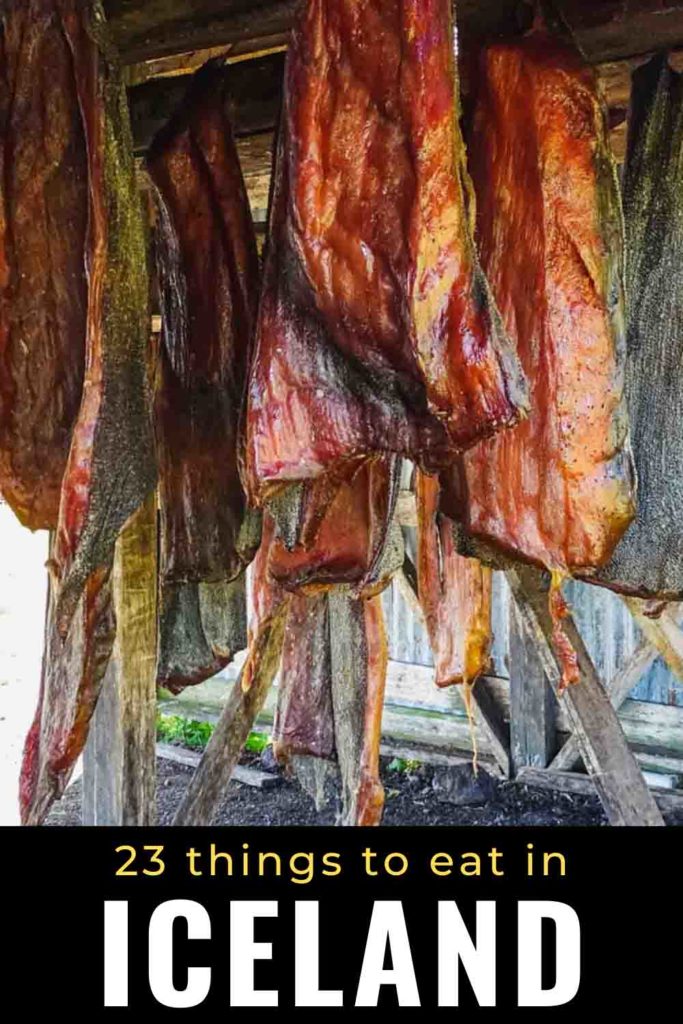
Iceland is really a great country. Always interested to learn more. Thanx for sharing.